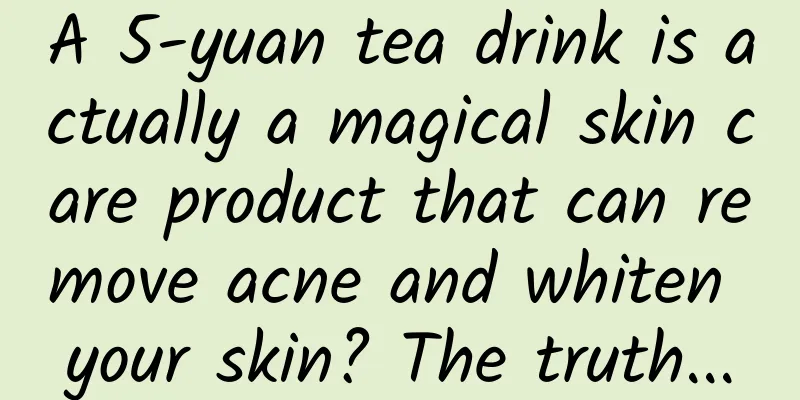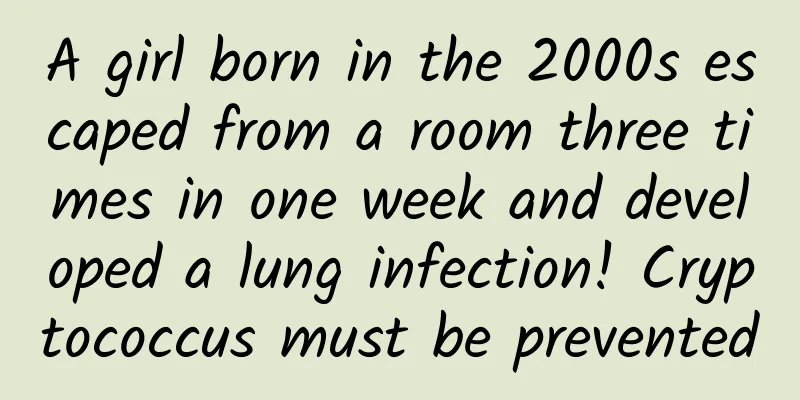A 5-yuan tea drink is actually a magical skin care product that can remove acne and whiten your skin? The truth...

|
Recently, a drink you may have drunk has become a new generation of skin care magic on a social platform - a certain brand of tea. According to the practice of fans, not only the tea water sold on the market, but also the tea water extracted by cold brewing overnight with homemade broken tea leaves or tea bags is said to be quite effective. Iced green tea water can not only quickly calm down red and sensitive skin caused by the sun in the hot summer, but the antioxidant effect of green tea can also prevent the skin from turning yellow, and the more you apply it, the whiter it becomes. The effect is much better than thousands of yuan of skin care products. It can not only repair after sun exposure, but also whiten and reduce swelling. It can also eliminate the acne, blackheads and large pores that bother you. Image source: A social platform Could it be that the tea that Chinese people have been drinking for thousands of years is really a lost gem in the skin care industry? Tea polyphenols are indeed useful, but concentration is critical It is undeniable that tea has always been the darling of the skin care industry, especially EGCG, catechins, epigallocatechin gallate, etc. extracted from green tea. When reaching a certain concentration, they have a strong antioxidant effect, and are also effective in relieving skin inflammation and astringing the skin. They are used in many skin care products. But the premise is to reach a certain concentration. In a series of related studies, the green tea extracts used are usually tea polyphenols obtained through a series of laboratory methods such as grinding, extraction, concentration, purification, etc., and when studying its antioxidant, light damage repair and other effects, the concentrations used by researchers often reach the range of 2% to 10%. Whether it is the tea we buy from the market or the DIY tea we make at home, the tea polyphenol content is far from reaching this concentration. According to the ingredient label, the tea polyphenol content of a popular tea of this brand is ≥280mg/kg, which meets the national standard for flavored tea beverages. However, for skin care users who want the effects of anti-oxidation, whitening, and tightening pores, this is far from enough. Image source: Yinuo/Photo The same goes for our homemade tea. Homemade products are unreliable Higher risk of allergies In addition, even if the concentration of tea polyphenols in tea can be raised to a certain level through high-concentration soaking and other means, there are still risks in applying it directly on the face. After all, there are thousands of ingredients in tea, such as caffeine, tannic acid, caffeine, theophylline, etc., which may cause allergies , making the already uncomfortable skin worse, especially when the skin is already broken, there is even more risk. If the production process is not done properly, it may be contaminated by microorganisms, which adds another risk to applying on the face. Moreover, tea drinks made for drinking do not contain penetration-promoting ingredients like skin care products. Even if there are certain active ingredients in them, they cannot penetrate into the skin as we wish and play the role of acne removal and whitening that we expect. In fact, cold brewed tea is not the first method of making skin care products using various foods at home. When we were young, we often saw so-called life hacks such as washing face with rice water, washing face with white vinegar, using pearl powder facial mask, applying aloe vera on face, using cucumber slices for hydration, etc., but now washing face with tea water has become popular again. Copyright images in the gallery. Reprinting and using them may lead to copyright disputes. However, homemade products are often of average effectiveness but carry considerable risks. For example, washing your face with rice water can whiten the skin, but this is actually just an illusion created by the starch in it on the skin surface. However, using white vinegar to wash your face may damage the skin barrier because acetic acid is too irritating. Applying raw aloe vera directly on your face is even more risky. Unprocessed aloe vera contains allergenic ingredients such as aloin and rhamnosine. Applying it on your face casually may cause redness, inflammation, and even severe blisters. Therefore, although homemade skin care products sound cheap and convenient, they are actually useless and may be risky, and subsequent treatments are even more expensive. If you want to achieve skin care effects, you should still choose regular skin care products. Planning and production Author: Science Popularization Team of Xinshi Science Popularization Studio Review | Feng Jun, deputy chief physician of the Dermatology Department of Sinopharm Tongmei General Hospital Planning丨Yinuo The cover image and the images in this article are from the copyright library Reprinting may lead to copyright disputes |
Recommend
Rare! Bathing can cause illness. What is "bird" disease?
Recently, Ms. Wang from Liuyang, Changsha, Hunan,...
Science fiction has become reality. You can also have a stand-in! 丨 Expo Daily
Spring Festival travel rush encounters snowstorm!...
Want to eat "Martian rice", how to transform the farm?
Recently, the color version of China's first ...
What are the effects and functions of maca wine?
Using maca to make wine is a common way of consum...
Does smoking affect your appearance? It’s true!
Author: Xiao Dan, Director of the Department of T...
Is it better to put food in the refrigerator when it is cold, or to put it in the refrigerator while it is hot? Here is the answer
Expert of this article: Dou Pan, deputy director ...
Why are space stations and satellites of various countries all concentrated in orbits at an altitude of 400 kilometers?
Not long ago, I was asked a very interesting ques...
To eat this delicious mushroom, you may need to go to the desert to dig sand
Recently, there is a video that has been going vi...
Marine Science Cartoon丨This long picture tells you how wonderful the world 8,000 meters below the sea is!
In addition to the world where humans and many ot...
The efficacy, effects and taboos of calcined corrugated paper
Calcined corrugated paper is a kind of medicine, ...
【Energy History 02】What's inside the nucleus? Open it and take a look
Thanks to the joint efforts of Dalton, Brown, Ein...
Does drinking Panax notoginseng powder harm the liver?
Panax notoginseng powder can be used to stop blee...
The efficacy and function of Zoumafeng
Rhizoma Zouma is a famous traditional and commonl...









